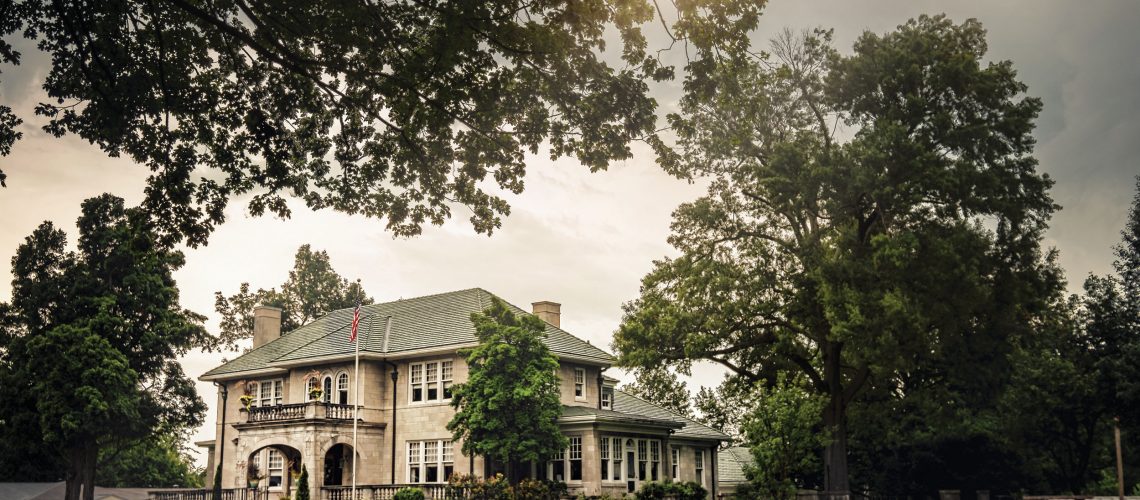Graves County Economic Development President Ryan Drane pointed to several accomplishments and indicators of a positive 2019. The main goal as 2020 launches is to see that continue.
Drane shared GCED’s review of the past year at an earlier January Graves County Fiscal Court meeting, beginning with the opening of Sullivan University’s Learning Center in Mayfield and listing projects at both Grace Commercial Park and Hickory Industrial Park. He also recently shared the organization’s goals for the new year.
Summarizing 2019, Drane listed four new companies and four expansions; 198 new full-time positions with a $7.6 million payroll and average $18.84 per hour wage; more than $75 million in investments and projected new tax revenue of more than $270,000 annually; as well as help securing more than $1.6 million in local business-assistance grants.
“We’re continuing to see strong growth across multiple sectors, even housing development,” Drane said. “All are strong indicators we’ve had several years of good, positive growth and I look for that to continue in 2020.”
A key goal is to complete some projects that began in 2019, such as the spec building work at Grace Commercial and Hickory Industrial so GCED can effectively market the buildings. Drane said the building at Grace should be completed soon and Hickory’s by the end of March.
“That gives us a leg up on being ahead of some projects,” he said.
Continuing developments at Grace Park includes construction of the new Workman Bins location and work to clean areas behind current businesses there, as well as looking at business expansion at the Hickory Industrial site.
Along with those two locations, Drane said GCED is also working with Gideon’s Crossing along north Dick Castleman Bypass, Mayfield Plaza and realtors on marketing other properties.
Recruiting a branded, three-star or higher hotel to Mayfield and Graves County is also a high priority. Drane acknowledged renovations done at Super 8 and Wingfield Inn, but said some businesses require employees to stay at hotels such as a Holiday Inn or Hampton.
“I feel we miss a lot of that, so we’re focused on trying to attract a hotel,” he added. But aside from business clientele, additional hotel options would benefit recreational activities such as baseball and softball tournaments and fair events.
“People are always coming in for sporting event or to visit family, for business … construction (workers), they need places to stay,” Drane said. “You don’t want your construction crew driving 30-40 minutes (for lodging). There’s a big need and it’s a high priority for us.”
He added another key for the coming year – and years – is vision. Looking forward is a function of both the Hometown Improvement Projects (HIP) group, as well as the 2020 U.S. Census.
Drane said HIP can drive a number of improvements the community has envisioned for years. The first step is a farmer’s market set near the Pat Powers Ballpark and fairgrounds area, along with discussions on ideas for the downtown tobacco warehouse area.
“We can take what we have and improve on that and improve on our quality of lifestyle,” he said. “When people come to look at a town, whether to build a plant or to live here, the livability factor is playing a bigger, bigger piece to that.”
He said communities that win at attracting more people over the next decade will be communities that can thrive over the next 50 years.
“The reason I say that is with unemployment rates being so low and the number of people retiring out of workforce, the supply and demand, there’s going to be such a gap that communities will have to be focused on bringing people in and what’s going to bring people in to live here,” Drane explained. “Obviously good jobs will, but you have to have some of those livability factors to attract companies.”
He cited the upcoming census as playing a pivotal role for the next 10 years and has been working to promote it, especially in the local African-American and Hispanic communities.
“Both of those communities are so under represented when it comes to numbers. That has a huge impact,” Drane said. Estimates are that for every person counted in the 10-year census, approximately $1,000 per year of federal funds flows down to local communities.
“Think about that,” he said. “It’s only taken every 10 years, so for every person counted, that’s an additional $10,000 to our community. We want them to understand they play a key role, not only in the funding we receive but also development of this community. We need all of the community and all organizations working together on this so we can thrive over the next decade.”
Other projects in GCED’s crosshairs are the United Works project that pairs non-violent jail inmates with local industry to work, pay off debts and learn skills, and a “LinkedIn”-style application called Tassel to help connect Mayfield and Graves County students, educators, post-secondary education and employers and guide their career paths.
Drane added that GCED is also working with state legislators Rep. Richard Heath and Sen. Stan Humphries on various key issues, such as the Rural Jobs Act and hemp reform. One key item is the public transit toll credit replacement.
The Graves Strategic Development group, which includes both city and county, chamber of commerce and tourism representation, pinpointed a need and partnered with Fulton County Transit to design the Ride to Work program here. The Kentucky Public Transit Authority is seeking an increase from $2 million to $10 million to replace the loss of toll credits.
Drane said having local civic and business representation attend events such as West Kentucky Night in Frankfort on Feb. 14 and contacting legislators can be a boost to Mayfield and Graves County.
“If we come together as a united group and have a strategic plan, we have a higher rate of success,” he said. “And if we’re focused on the right issues and communicating the impact of those issues, we have a higher rate of success.”





